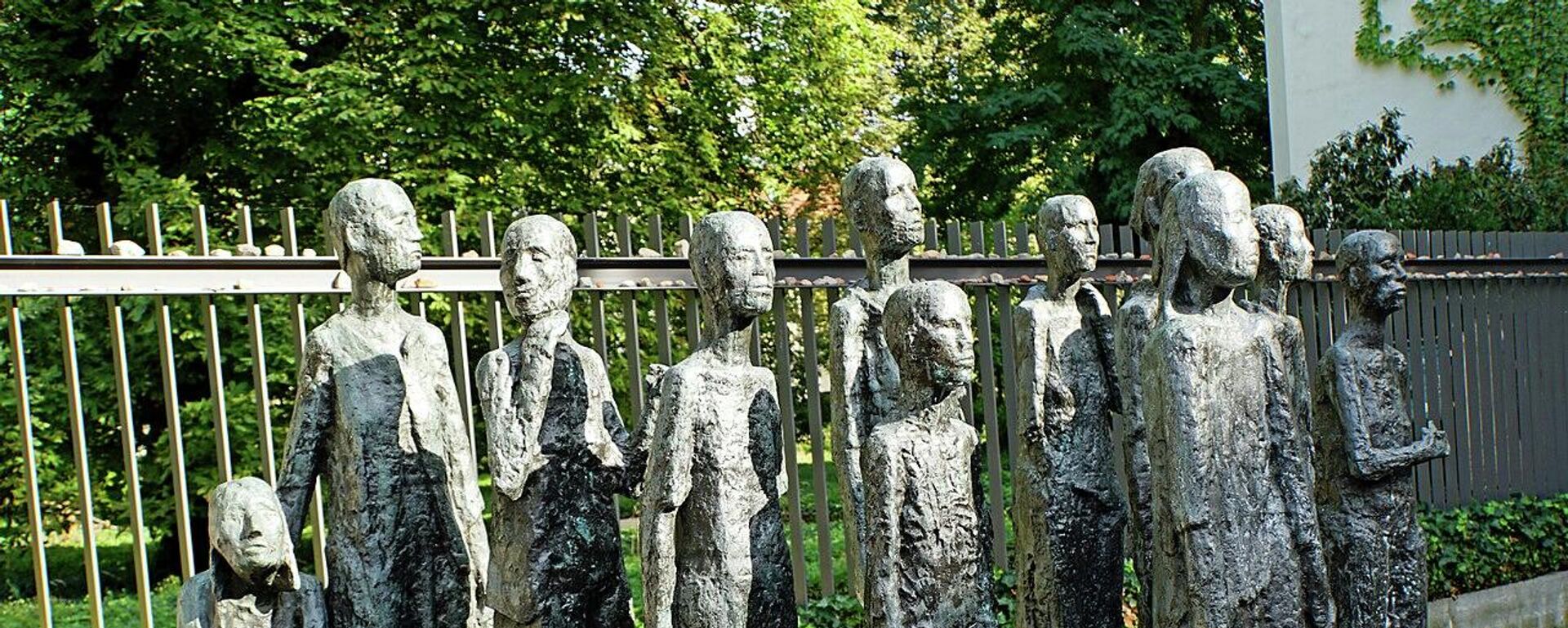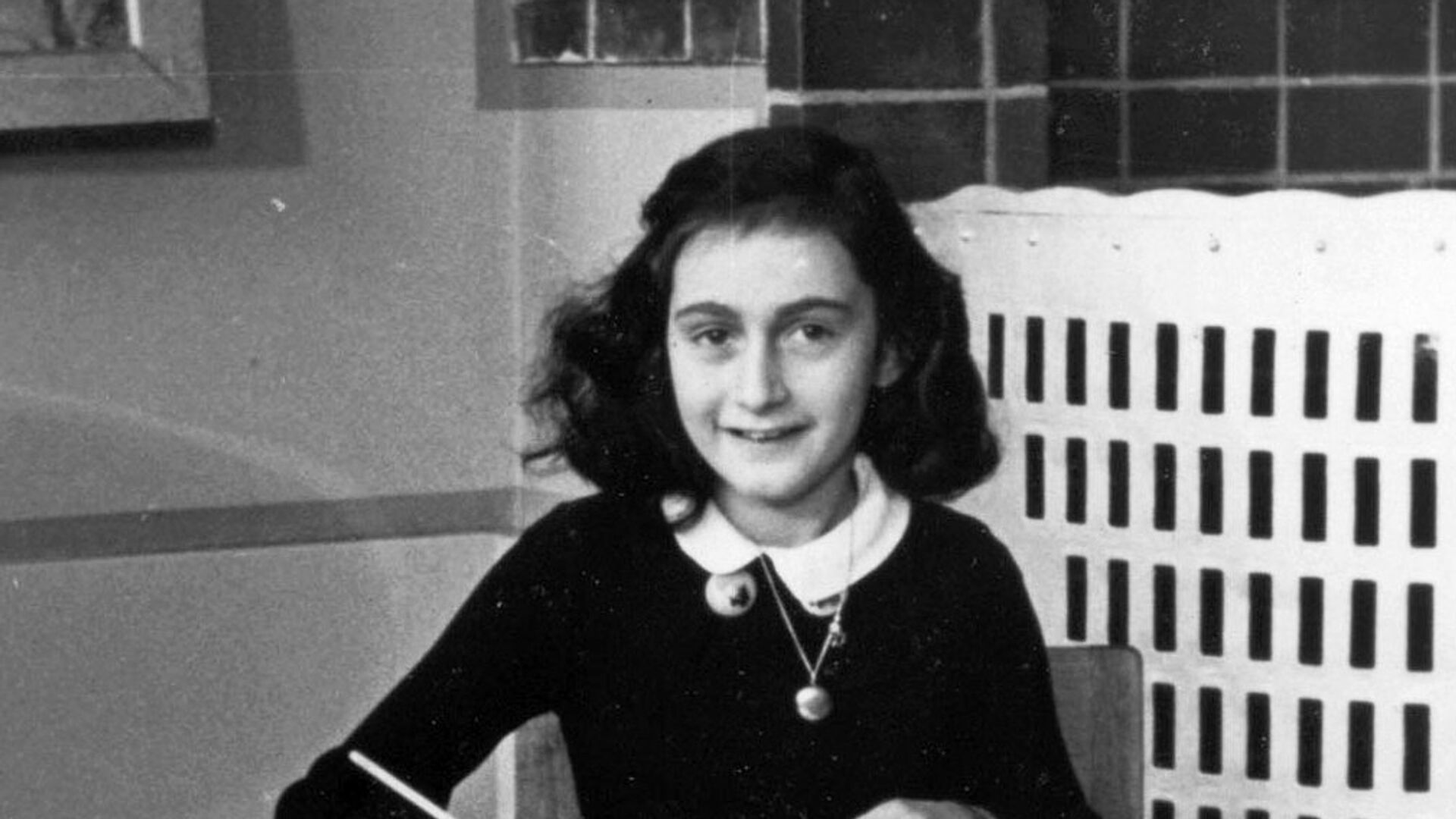https://sputnikglobe.com/20220117/anne-frank-possibly-betrayed-by-man-trying-to-save-his-own-family-cold-case-team-says-1092327104.html
Anne Frank Possibly Betrayed by Man Trying to Save His Own Family, Cold Case Team Says
Anne Frank Possibly Betrayed by Man Trying to Save His Own Family, Cold Case Team Says
Sputnik International
Thijs Bayens, the person who came up with the idea to put together the cold case team, warned that they “don’t have 100 percent certainty”, and that “there is... 17.01.2022, Sputnik International
2022-01-17T19:29+0000
2022-01-17T19:29+0000
2022-01-17T19:29+0000
investigation
evidence
anne frank
betrayal
https://cdn1.img.sputnikglobe.com/img/106451/08/1064510865_0:21:1009:589_1920x0_80_0_0_eff6c6794217a4198619478d3b2ea6c9.jpg
A team led by a retired FBI detective named Vince Pankoke has managed to identify the person who may have helped the Nazis seize the family of Anne Frank, likely one of the most well-known Holocaust victims, AP reports, citing a new book titled "The Betrayal of Anne Frank A Cold Case Investigation."According to the newspaper, Pankoke and his team had identified Jewish notary Arnold van den Bergh, a member of Amsterdam’s Jewish council – an administrative body the Nazis forced Jewish communities in occupied Europe to establish – as the person who likely betrayed the Frank family’s hiding place.He added, however, that they "don’t have 100 percent certainty", and that "there is no smoking gun because betrayal is circumstantial."Van den Bergh’s name came up in a "typed copy of an anonymous tip" that was delivered to Otto Frank, the only member of the Frank family to survive the Holocaust and return to Amsterdam after the end of the war, with the tip identifying Van den Bergh as the person who informed the Nazis about the Franks’ hiding place.This supposed betrayal was possibly perpetrated by Van den Bergh in order to save his own family from being sent to Nazi concentration camps.The media outlet also notes that The Anne Frank House museum in Amsterdam welcomed the new research but said that it still leaves questions unanswered.The Frank family, along with four other Jews, were hiding in a secret annex from July 1942 till August 1944 when they were discovered by the Nazis and sent to concentration camps.Anne and her sister died in the the Bergen-Belsen concentration camp in 1945, with the diary Anne wrote while in hiding being published after the war and becoming probably one of the best known books in the world.
https://sputnikglobe.com/20211220/dc-3rd-graders-reportedly-made-to-reenact-holocaust-told-its-because-jews-ruined-christmas-1091662252.html
Sputnik International
feedback@sputniknews.com
+74956456601
MIA „Rossiya Segodnya“
2022
News
en_EN
Sputnik International
feedback@sputniknews.com
+74956456601
MIA „Rossiya Segodnya“
Sputnik International
feedback@sputniknews.com
+74956456601
MIA „Rossiya Segodnya“
investigation, evidence, anne frank, betrayal
investigation, evidence, anne frank, betrayal
Anne Frank Possibly Betrayed by Man Trying to Save His Own Family, Cold Case Team Says
Thijs Bayens, the person who came up with the idea to put together the cold case team, warned that they “don’t have 100 percent certainty”, and that “there is no smoking gun because betrayal is circumstantial.”
A team led by a retired FBI detective named Vince Pankoke has managed to identify the person who may have helped the Nazis seize the family of Anne Frank, likely one of the most well-known Holocaust victims, AP reports, citing a new book titled "The Betrayal of Anne Frank A Cold Case Investigation."
According to the newspaper, Pankoke and his team had identified Jewish notary Arnold van den Bergh, a member of Amsterdam’s Jewish council – an administrative body the Nazis forced Jewish communities in occupied Europe to establish – as the person who likely betrayed the Frank family’s hiding place.
"We have investigated over 30 suspects in 20 different scenarios, leaving one scenario we like to refer to as the most likely scenario," said Thijs Bayens, a filmmaker who came up with the idea to put together the cold case team led by Pankoke.
He added, however, that they "don’t have 100 percent certainty", and that "there is no smoking gun because betrayal is circumstantial."
Van den Bergh’s name came up in a "typed copy of an anonymous tip" that was delivered to Otto Frank, the only member of the Frank family to survive the Holocaust and return to Amsterdam after the end of the war, with the tip identifying Van den Bergh as the person who informed the Nazis about the Franks’ hiding place.

20 December 2021, 08:57 GMT
This supposed betrayal was possibly perpetrated by Van den Bergh in order to save his own family from being sent to Nazi concentration camps.
The media outlet also notes that The Anne Frank House museum in Amsterdam welcomed the new research but said that it still leaves questions unanswered.
"No, I don't think we can say that a mystery has been solved now. I think it's an interesting theory that the team came up with," museum director Ronald Leopold said. "I think they come up with a lot of interesting information, but I also think there are still many missing pieces of the puzzle. And those pieces need to be further investigated in order to see how we can value this new theory."
The Frank family, along with four other Jews, were hiding in a secret annex from July 1942 till August 1944 when they were discovered by the Nazis and sent to concentration camps.
Anne and her sister died in the the Bergen-Belsen concentration camp in 1945, with the diary Anne wrote while in hiding being published after the war and becoming probably one of the best known books in the world.


